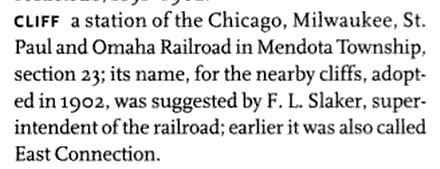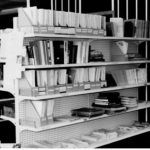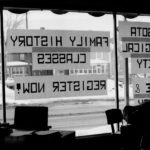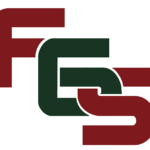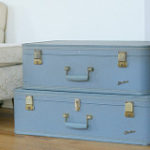 I already have a suitcase opened in my apartment and am adding things to it for my time at the 2018 Salt Lake Institute of Genealogy and some time at the Family History Library. This post is an update of one I shared in the past.
I already have a suitcase opened in my apartment and am adding things to it for my time at the 2018 Salt Lake Institute of Genealogy and some time at the Family History Library. This post is an update of one I shared in the past.
It’s a January ritual for me and several hundred other family historians. This includes people from all over the U.S., Canada, and some other countries. The week-long Salt Lake Institute of Genealogy (SLIG) begins on Monday, January 22nd with a special reception and registration the night before. That’s when most students pick up their syllabus for their course.
Some arrive before SLIG in order to research at the Family History Library (FHL) where it’s a joy to simply pull films out of a drawer. Yes, some students live in the greater Salt Lake City area, but often the duties of daily life interfere with getting downtown to do the research. Others stay after SLIG and many scurry over to the FHL after classes each day.
As many of you know, I coordinate and teach the intermediate level Taking Your Research to the Next Level that many have taken before venturing further into more advanced courses. In this course, visits to the library are a must as students work on the week’s class project which is the main homework. The students in this course also have an opportunity to sign up for a private consultation with me or the other instructors.
In addition to preparing for SLIG, I am reviewing client files to see what must be accomplished at the FHL and also some of my own files for a bit of family research. As of the early hours of January 1, 2018, I have a few new leads on my own family. This means I am listing films that I want to view while I am there and can easily move from a filmed index to a filmed record or move to another film when I make a great discovery. Bring along a couple flash drives so that you can make digitized images from the films and transfer to your own flash drive. The flash drive is also important if you find something online while using one of the many library computers and subscription databases.
I bring along some granola bars and apples for quick breakfasts and daytime snacks. A Harmon’s grocery store is about 3.5-4 blocks from the Hilton Hotel where SLIG is held. Another option is to take the TRAX light rail to Smith’s at 400 South at 600 East. Smith’s has much more than groceries including clothes, jewelry, and even tools should you need a wrench for some reason! My main reason for going to the grocery store is to get lots of water and fresh fruit. The FHL allows us to bring in a closed water container.
My packing list includes plenty of lip balm and lotion since the air is so dry in SLC. I bring my computer, cords, and my Fopydo for taking pictures from books using my phone. What is a Fopydo? Check my blog post on that. You will likely see a few of us using one when we are on the third floor of the library. For more info on scanners and cell phone apps for scanning, check this Facebook page Technology for Genealogy.
Light sleeper? Bring earplugs and a eye mask. Good sleep makes a better learner and researcher. The rest of what you need to bring is the standard stuff for any trip. If you don’t have a packing list, start one now and check online for lists others have posted on websites and I have seen some tips on the SLIG 2018 Facebook page. It’s terrible to waste FHL time by running to the store again to purchase something you forgot to pack.
Of course, your packing list will differ depending on whether you fly or drive. If you have other suggestions, please add them in a comment so that others can learn from your expertise.
- a couple clothespins to close a bag of snacks
- snacks for between lectures
- comfortable shoes (2 pair so one can rest for a day)
- laundry bag
- sweater or lightweight jacket in case a classroom is chilly
- throat lozenges or hard candies in case you get a scratchy throat
- chargers and a power strip for phones, tablets, and computers
- cable lock for computer
- surge protector (I use this one goo.gl/Z3Ujno that was suggested to me by Cyndi of Cyndi’s List. It works great at the FHL)
- Flash drives/USB drives/thumb drives
- account passwords
- business cards so others can find you after SLIG (Add the surnames you are searching)
- don’t forget to bring any over the counter or prescription medications
- your own pillow if you can’t sleep without it!
- power strip
- tissues
- curling iron
- some hangers
- Some paper towels (you really don’t need a whole roll)
- couple file folders for any extra handouts
- pad of paper and pens/pencils
- computer or electronic tablet for taking notes and for homework
- highlighter for marking items in syllabus
- clothing (definitely not optional)
- headphones (you may need quiet for a while or to listen to a different kind of music than your roommate)
- soap, shampoo, conditioner, hairbrush, comb, lotion razor, shaving cream
- toothbrush, toothpaste, deodorant, and other toiletries that you need
- makeup
- prescription and other medications
- disinfectant wipes
- lip balm, lip balm, lip balm (get the hint? LOL)
- post-it pad – leave notes for yourself or a roommate
- winter hat, gloves, scarf, and coat
- umbrella (it has rained at times)
